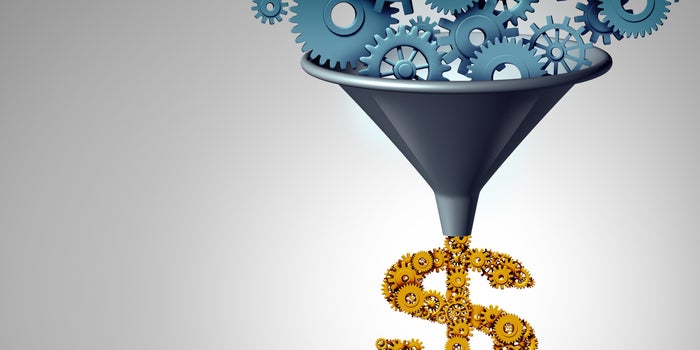
As a business owner, you will come across a sales pipeline during the course of running your company. It’s a term you hear thrown about a lot, but there’s a lot to unpack here. Many new business owners don’t understand the concept of a sales pipeline, nor do they see the benefits of having one. In fact, unless you come from a sales background, you probably know very little about this topic.
After all, that’s why you’ve clicked on this post, right?
You have a few questions relating to sales pipelines that you want to learn the answers to. So, here are some of the most frequently asked questions, answered!
What is a sales pipeline?

In simple terms, a sales pipeline is a visual aid that helps you track buyers and prospective buyers as they move through the purchasing process. The idea is that every buyer will start in one place, and they move through the pipeline until they have made a purchase.
You typically see a sales pipeline drawn up visually as a long horizontal or vertical flow with different stages. Each stage represents where someone is in the purchasing process, and each time you deal with a prospect, you can place them within one of these stages. The main goal of the pipeline is to streamline your sales process as you learn how to move each prospect through the stages until completion.
Do you need a sales pipeline?

Technically, no. However, you should rephrase this question as: do you want to maximize revenue and increase your sales numbers? Suddenly, the answer is obvious; of course, you do.
While a sales pipeline is not technically ‘essential,’ it will help you improve your entire sales process to the point where you secure more deals, improve conversions, and make more money. So, yes, you kind of do need a sales pipeline if you want to be as successful as possible.
What are the benefits of a sales pipeline?
A better way of answering the previous question is by looking at what you gain from having a sales pipeline. Below, you’ll find the key benefits that all businesses can enjoy with a good pipeline in place:
- Develop a framework for the sales process – A big advantage of a sales pipeline is that it lets you set all the different stages of the sales process. In essence, you create a framework for your teams to follow, ensuring everyone is on the same page. It should help you streamline the process so everyone has a better shot at closing deals.
- Dramatically improve conversion rates and productivity – Sales pipelines also help you understand which deals and prospects are the most likely to convert. Within the stages of the pipeline, you can clearly see who is most likely to become a customer or not. Therefore, your sales teams know who to focus on, and who to avoid. It stops them from wasting valuable time and resources on prospects with low conversion potential, focusing on the ones that are most likely to convert. Therefore, conversion rates improve, and productivity increases.
- Makes your money work better – Another key advantage of a sales pipeline is that you can identify where your money should go. It lets you see where you need to spend your resources to elicit the most success from your sales campaigns. Going back to the previous point, it’s all about identifying where the most likely conversions are, rather than wasting money on cold leads.
- Track your progress – The very nature of a sales pipeline lets you track your progress and see how your business is doing in comparison to the past.
As a brief summary of the benefits, we can say that a sales pipeline will help you close more deals in less time with less effort and by spending less money.
How do you build a sales pipeline?

Understanding how to build a sales pipeline can be quite tricky, and we don’t have enough time to go through it in detail here. However, we can provide a few little steps to help you get started, the first of which is to invest in a good CRM tool. There are many options out there, with Pipedrive being a popular one as you can then get Pipedrive to BigQuery integration, using Google’s BigQuery tool for further data insights. Regardless of which CRM tool you choose, the idea is that your entire pipeline can be built within it, allowing you to analyze everything as prospects go through the stages.
Speaking of which, what are the stages of a sales pipeline? People can have differing opinions, but most agree that the following stages should be present:
- Prospecting
- Lead qualification
- Demo
- Proposal
- Negotiation
- Closing
- Post-purchase
There’s a video below that you can use to get more details on how to set your pipeline up, and there are also many resources online that go into this in more detail.
Is a sales pipeline the same as a sales funnel?
Now, this is possibly the most common question people ask, and it can be confusing. Sales pipelines and sales funnels are two separate and different things. The pipeline is more focused on the actions taken by sellers to move prospects through different stages. By comparison, a sales funnel is more to do with the number of prospects and the conversion rate of said prospects within the different stages of your pipeline.
A good summary is that your sales pipeline shows the stages a prospect goes through to become a buyer, while a sales funnel shows the number of prospects that make it through each stage.
In conclusion, every business should ideally have a sales pipeline if it wants to be successful. Arm yourself with some good CRM software, then begin building your pipeline. It will help you increase your sales, become more efficient when dealing with prospects, and make your money go a lot further. Realistically, there are no downsides to building a sales pipeline and a whole load of benefits.




